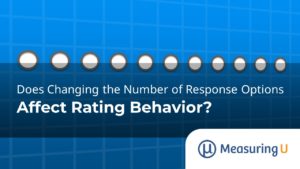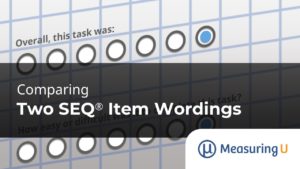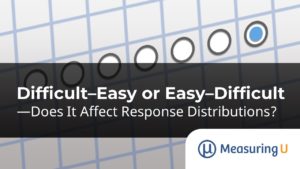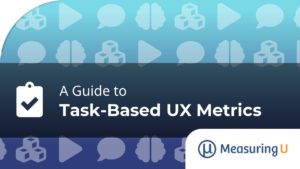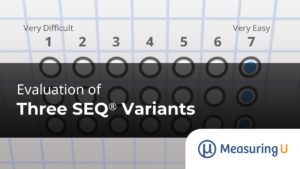
Evaluation of Three SEQ Variants
The Single Ease Question (SEQ®) is a single seven-point item that measures the perceived ease of task completion. It is commonly used in usability testing. Since its introduction in 2009 [PDF], some researchers have made variations in its design. Figure 1 shows the version that we currently use. In 2022, we decided to test some
